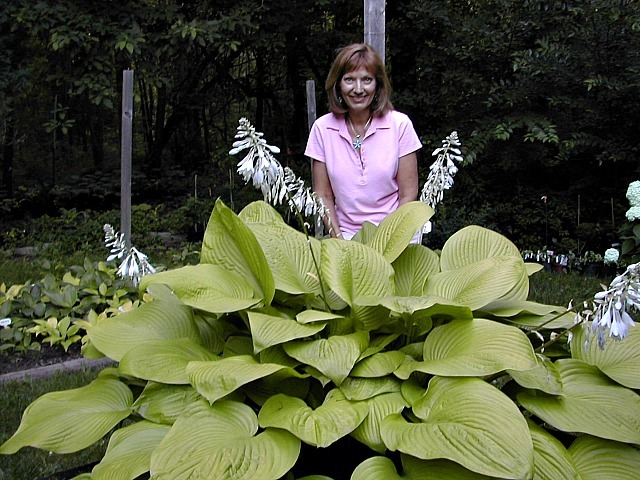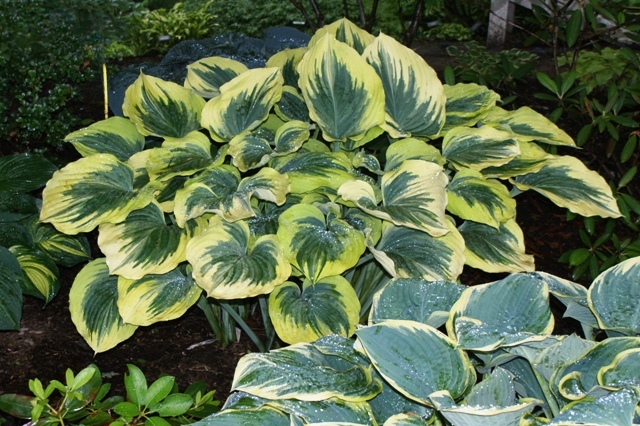The American Hosta Growers Association defines giant hosta as those that exceed 30 inches in height. There are several cultivars now that are in the 48 inch range. The size GIANT Hostas can achieve in your garden is determined by the light exposure, the available water and the depth and quality of the soil. All three factors need to be optimum to achieve maximum size.
How You Can Optimize The Growing Conditions For GIANT Hosta
I like to use the analogy of comparing the needs of mice vs. elephants to the needs of miniature hosta vs. giant hosta.
On a small amount of food and water, mice can reach maturity in a matter of months.Compare that to an elephant. An elephant takes huge amounts of food and water to reach maturity over 15 to 20 years!
With good conditions the giant hosta will reach maturity in 5 to 6 years.
Light Exposure
The optimal light for hostas as a general rule is:
- dark greens and blues in less sun
- yellows in more sun
- variegated generally in mixed light
The ideal lighting is tree cover that has the hosta in and out of the sun as the sun travels through the sky.
Hostas Need Water
Availability of water to the giant hostas is a very important factor. Most hostas receive about 60 inches of rainfall annually in their native habitat of East Asia.
When water is withheld, the hostas will stop growth. It will not be able to store as much food in the crown, which will then reduce the size of the plant the following spring.
Location, location, location is the largest factor in determining available water. If you have been gardening in the same location for several years you know where the moist spots are.
Moist areas are the ideal spot for the giant hostas. We’re not talking about standing water that has no oxygen in the soil. The best spot has soil that is likely to still be moist in the hot summer months.
The Depth and Quality of the Soil
Deep rich soil is very much a factor in how large your giant hosta can grow. Here in New England we think 10 inches of loam is deep. If you are in Iowa, that is considered poor shallow soil. Ten inches of topsoil is fine.
The higher the organic matter content is the better the soil will be. Incorporating 50% compost to the mix you back fill with is optimal. You can maintain a high organic content through the years by allowing mulch to rot in place. Besides retaining and making nutrients available to your giant hostas, the organic matter also allows better water penetration and retention in your garden soil.
Obviously, not everyone has the “perfect” location to grow giant hostas to their potential. The solution is to amend the soil to help create a desirable site. Adding organic matter and peat moss will help with water retention. After that it is up to us to water the hostas when Mother Nature doesn’t do her part.
Giving hostas, and especially giant hostas, about 1 inch of water a week will greatly improve the chances of growing a massive clump.




